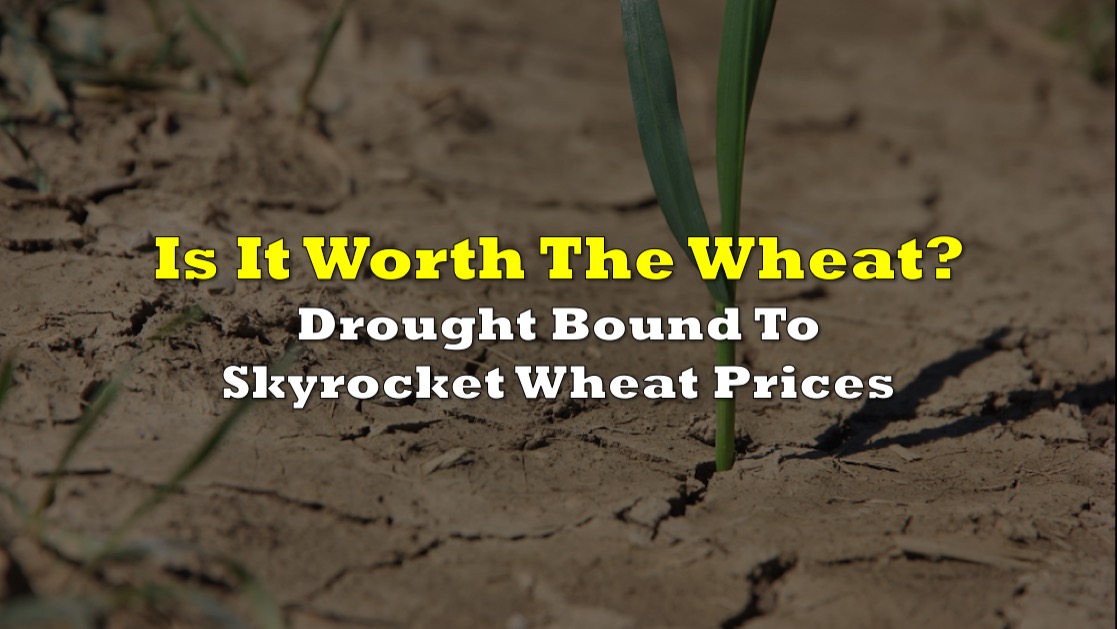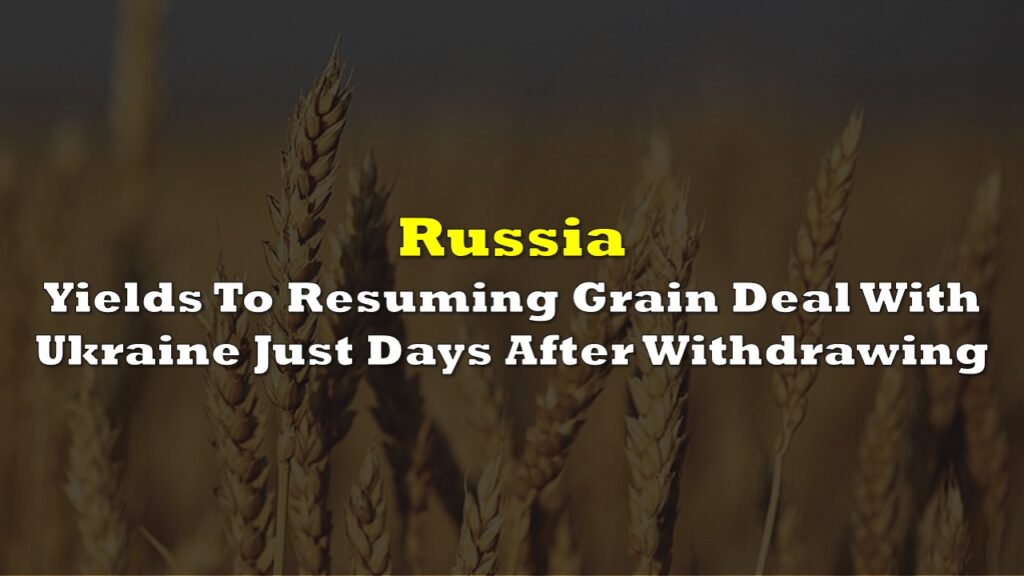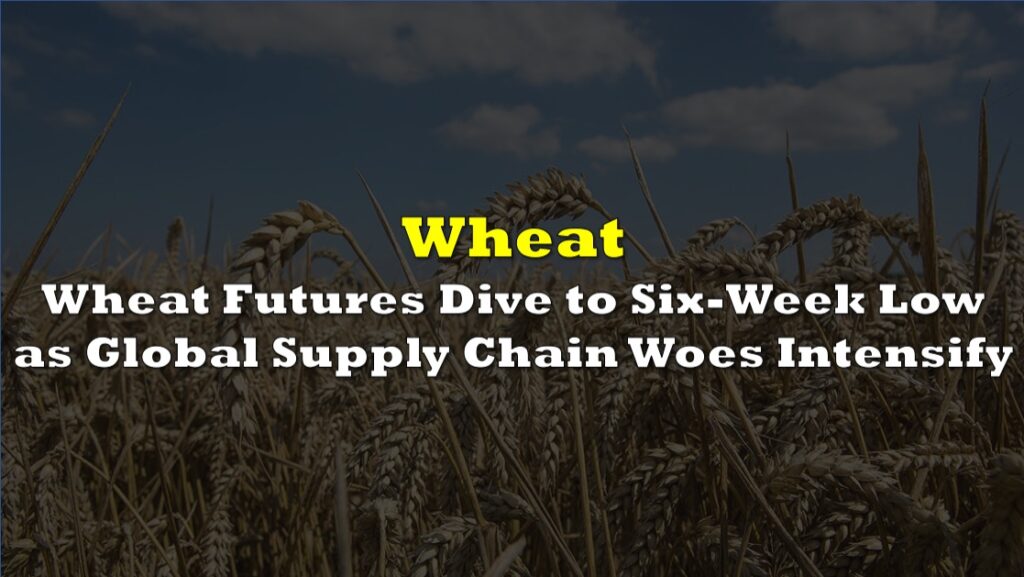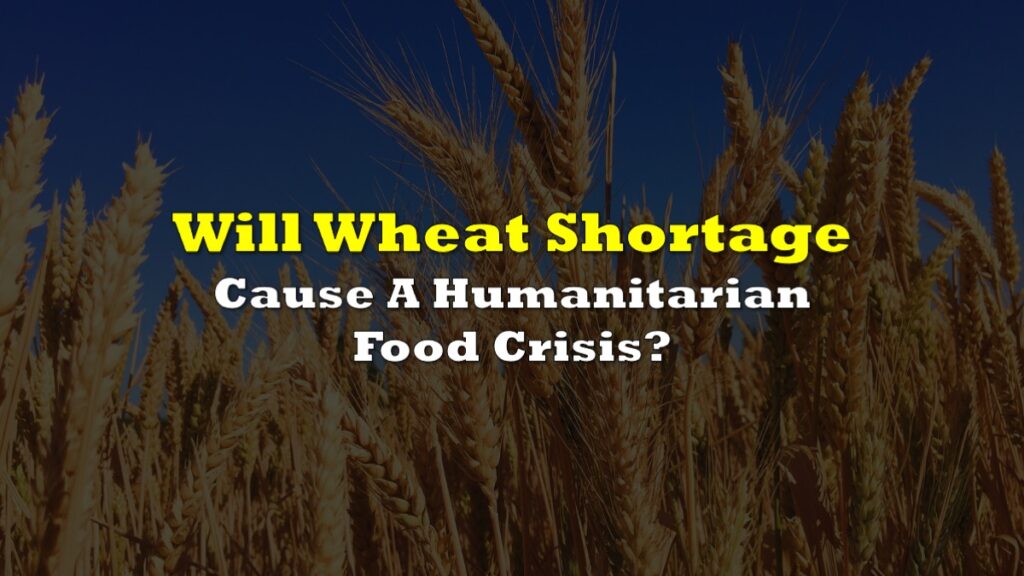Wheat futures kick-started Friday’s trading session with significant double-digit gains, following a robust performance by grain futures on Thursday. With wheat prices reaching session highs, there was an overall increase of 3% to 5% in the market.
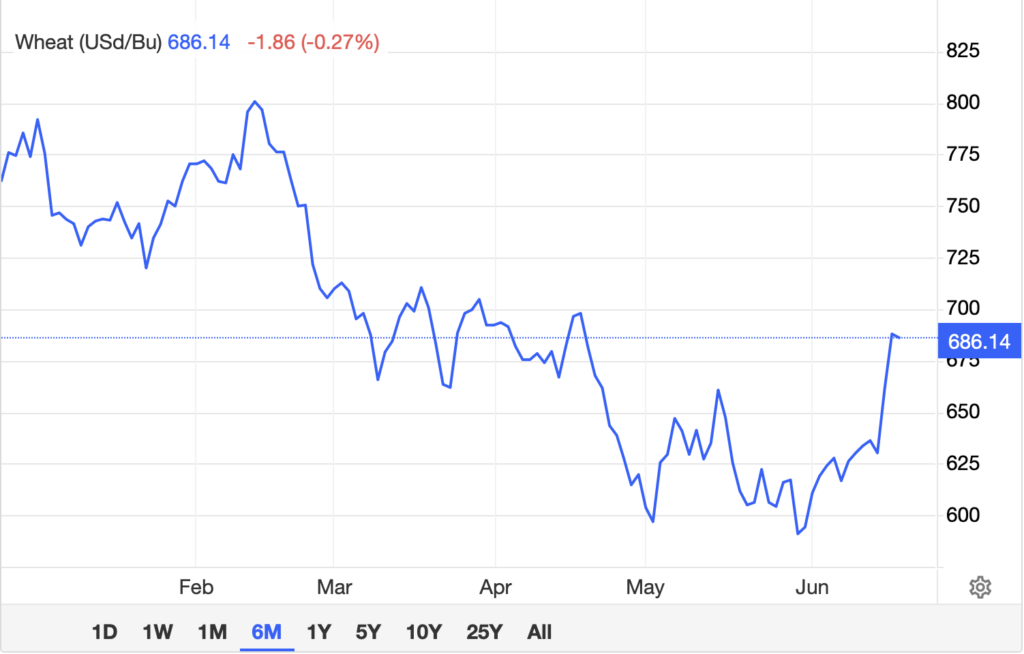
The latest weekly USDA Export Sales report revealed lower-than-expected sales of 165k MT of old crop wheat, falling below the estimated range. HRW accounted for 72k MT of the sales, while SRW contributed 57k MT. Looking ahead, estimates for the US Export Sales report indicate a range of 200k MT to 450k MT for the week ending June 8th.
Notably, Taiwan secured 56k MT of US wheat through a tender, while Japan is actively seeking 60k MT of feed wheat.
This comes after wheat prices have gone down from its spike at the onset of the Russia-Ukraine war. The deal inked among Russia, Ukraine, the United Nations, and Turkey in July 2022 momentarily eased the tension of a potential food shortage crisis since Ukraine’s seaports have been closed when the war started.
However, prices have resumed an upward trajectory following an announcement by Russian officials that the trade corridor for Ukrainian grain exports, which ensures a smooth flow of trade, will not be extended beyond its scheduled expiration date of July 17th. This decision raises concerns about potential shortages as the cessation of Ukrainian Black Sea grain exports eliminates a vital supply source for Middle Eastern and African markets.
Additionally, Ukrainian grain supplies continue to face challenges due to the impact of the Kakhovska hydroelectric dam explosion. This incident disrupted water supply to crucial wheat-growing regions, exacerbating the existing drought conditions in those areas.
Global wheat supply threat
The recent jumps in commodity prices are also being attributed to the threat in global wheat supply. A recent study published in the journal npj Climate and Atmospheric Science highlights the potential risks posed by extreme heat waves and drought caused by climate change. The research focuses on a worst-case scenario where two vital breadbasket regions, the U.S. Midwest and northeastern China, experience simultaneous extreme weather events, severely impacting winter wheat crops.
Winter wheat, a crucial crop harvested in early summer after a period of dormancy during the winter, is found to be increasingly vulnerable to extreme weather conditions that exceed its tolerance levels. If such events occur simultaneously in multiple regions, as is increasingly likely in our current climate, the global food system could face significant strain.
Climate change is already disrupting food production worldwide, as evidenced by the devastating drought in the Horn of Africa starting in 2020. The World Weather Attribution Network concluded that climate change was responsible for this drought, which resulted in the loss of crops, livestock, and left over 4 million people in need of humanitarian aid.
This year, China’s major wheat-growing province, Henan, is facing challenges in harvesting grain due to delayed rain and previous damage caused by wet weather, according to Reuters.
In US, the state of Kansas–often considered the country’s breadbasket–is expected to harvest its smallest yield in more than 60 years. The state, leading the country in wheat production, has been crippled by a prolonged drought that has significantly reduced crop yields over the last two years.
This year, Kansas is anticipating the smallest wheat harvest since 1957, a year in which wheat production was intentionally suppressed by the Eisenhower administration. In the previous year, Kansas managed to produce 244 million bushels of hard red winter wheat.
“This year, they’re projecting the yield to be 30 bushels an acre on average,” said Hayden Guetterman, a farmer. “That kind of estimates out to 178 million bushels a week. That’s down substantially from what we normally produce. It will have an affect.”
Alberta drought
Farmers in southern Alberta meanwhile are facing a severe agricultural crisis as crops that should be thriving are turning brown. Insufficient precipitation since mid-April, particularly in areas south of Calgary, has led to crop losses and grim predictions for the region.
“They are dying essentially. It’s something that we’ve never experienced before. We’ve had dry conditions later in the season but to have it at the end of May, beginning of June like this is unprecedented,” said Stephen Vandervalk, a fourth generation farmer in southern Alberta and the vice president of the Western Canadian Wheat Growers Association.
The lack of rain, combined with grasshopper infiltration, has devastated crops, with some farmers reporting a loss of up to a third of their crop. Without rain in the near future, the situation could worsen, potentially resulting in zero production for the affected area.
The drought’s impact extends beyond crops, affecting the availability of pasture for cattle in Foothills County. The scarcity of grass has led ranchers to delay turning out their cattle, forcing them to rely on winter feed storage. With those reserves running low, ranchers may need to purchase additional feed or seek alternative pastures. Dugouts, vital water sources, are also drying up due to the prolonged absence of rain.
“Farming techniques have changed so much that if we were experiencing what we have in the last six years, 30 or 40 years ago, southern Alberta would be a dust bowl,” Vandervalk said.
Farmers in the region are anxiously hoping for rain in the coming week, as it could determine the fate of their remaining crops. The lack of moisture has depleted soil reserves, posing a significant challenge to canola, barley, and wheat crops. While timely and consistent rainfall in June and July may salvage the canola crop, the situation remains bleak for cereal crops. To mitigate long-term consequences, farmers have emphasized the importance of continued weed control measures and responsible farming practices.
Considering the severity of the drought, local officials are contemplating declaring a drought emergency in the county. Such a declaration would enable farmers and ranchers to seek federal assistance to cope with the dire conditions.
“You can’t just walk away because you can affect 10 years into the future. The perfect example is wild oats — a horrible weed. You’re going to be farming next year so you have to do what’s best for next year not just was best for your pocketbook today,” Vandervalk lamented.
Information for this briefing was found via Global News, NBC, KCTV, and sources mentioned. The author has no securities or affiliations related to this organization. Not a recommendation to buy or sell. Always do additional research and consult a professional before purchasing a security. The author holds no licenses.

